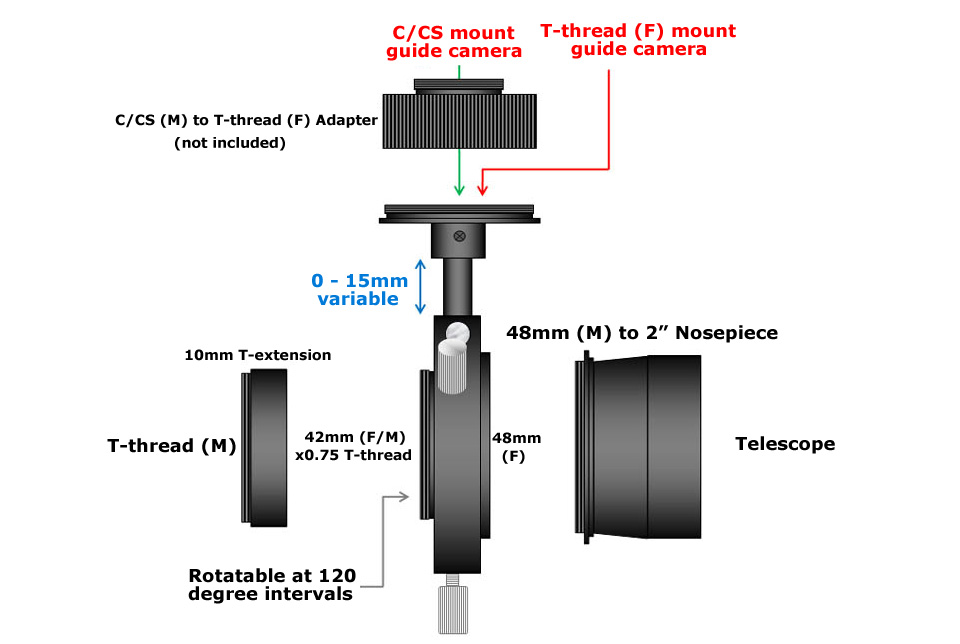- News
- Cameras
- Opticstar DS-616C XL+ Colour Camera
- Opticstar PX-126C Colour Camera & Guider
- Opticstar PX-35C CoolAir Colour Camera
- Opticstar PX-75C CoolAir Colour Camera
- Opticstar PX-75M CoolAir Monochrome Camera
- Opticstar SL-131C CoolAir Colour Camera
- Opticstar PL-131M CoolAir Monochrome Camera
- The Imaging Source DBK 21AU04.AS Camera
- Telescopes
- Opticstar/Ascension 102ED Triplet APO Premium
- Opticstar/Ascension 102ED Triplet APO Premium & Field Flattener
- Opticstar/Ascension 102ED Triplet APO Premium (marks) & Hard Case
- Opticstar/Ascension 102ED Triplet APO Premium Plus
- Opticstar/Ascension 102ED Triplet APO Premium Plus & Field Flattener
- Opticstar/Ascension 102ED Triplet APO Premium Plus (marks)
- Opticstar ARC127 Refractor
- Opticstar ARC127 QUAD Refractor
- Opticstar ARC152 QUAD Refractor
- Accessories
- Eyepieces
- Barlows Lenses & Tele-Extenders
- Optical Filters
- Imaging Accessories
- Off Axis Guider
- Field Flattener
- Adjustable Projection Kit 2-inch
- Canon-style T-Ring
- Nikon-style T-Ring
- Sony-style T-Ring
- Sony-style Low Profile T-Ring
- Canon-style M48 Ring
- Nikon-style M48 Ring
- Nikon-style Low Profile T-Ring
- Adjustable Eyepiece Projection Kit 1.25-inch
- Adjustable Eyepiece Projection Kit
- Adapters
- T-Type 10mm Extension Tube
- T-thread to 1.25-inch Nosepiece
- T-thread to 1.25-inch Drawtube
- T-thread (M) to (M) Adapter
- Set of Three T-thread Adapters
- T-thread to 2-inch Nosepiece
- T-thread to 2-inch Long Nosepiece
- M48 to 2-inch Nosepiece
- SCT to 2-inch Low Profile Adapter
- 1.25-inch Extension Tube
- 2-inch Extension Tube
- C/CS to 1.25-inch Nosepiece
- C/CS to T-thread Adapter
- Set of T-Thread & C-thread Adapters
- 2-inch to 1.25-inch Adapter
- 2-inch Drawtube to SCT (F) Adapter
- M42 to M48 Adapter
- SCT to T-thread Adapter
- T-Type 5mm Extension Tube
- Dovetails, Rings, Weights
- Short Mounting Plate
- Standard Mounting Plate
- Mini Dovetail
- Starwave Vixen-style Dovetail
- Losmandy-style Universal Plate 7-inch
- Losmandy-style Plate for Televue
- Vixen-style Dovetail for Celestron 8-inch SCT
- Vixen-style Dovetail for Celestron 9.25-inch SCT
- Vixen-style Dovetail for Celestron 11-inch SCT
- Losmandy-style Plate for Celestron 14-inch SCT
- Collimating Rings 90mm & Vixen-style Dovetail
- Collimating Rings 90mm & Losmandy-style Adapters
- Collimating Rings 125mm & Losmandy-style Adapters
- Collimating Rings 160mm & Losmandy-style Adapters
- Guidescope Rings & Rail (8")
- Guidescope Rings & Rail (10" & 11")
- Guidescope Rings & Rail (12" & 9.25")
- Finderscope Bracket 50mm V-style
- Red Dot Finder
- Prism Erector 1.25-inch
- Finderscope Shoe
- ARC Finderscope Bracket 50mm (Tall) & Leg Base
- ARC Finderscope Bracket 50mm (Tall)
- William Optics-type Base for Red Dot Finders
- Red LED Torch
- LED Head Light
- Counterweight for EQ700, EQ1300, EXOS-2
- Illuminated Polar Scope for EQ700
- Tripod Leg Spreader (AZ GoTo)
- Standard Binocular L-Bracket
- Heavy Duty Binocular L-Bracket
- Transporter Backpack
- Guidescope Rings & Rail (14")
- ARC Finderscope Bracket 50mm & Leg Base
- ARC Finderscope Bracket 50mm
- ARC Finderscope Leg Base
- Slow Motion Controls
- Slow Motion Control 13cm
- Extra 1.36kg Counterweight
- Vixen-style Dovetail for Meade 10-inch ACF & SCT
- Bahtinov Mask - Celestron 9.25-inch SCT
- Counterweight Shaft Extension
- Latitude Scale Plate for EQ3-2, EQ5
- Collimating Rings 120mm & Dovetail
- Slow Motion Control 19cm
- Green Laser Pointer 5mW
- Counterweight Shaft for EQ3, EQM-35, EQ5
- Counterweight Shaft for EQ3, EQM-35, EQ5 (ex-display)
- Counterweight Safety Nut M6
- Counterweight Safety Nut M12
- Mount Bolt Nut M12
- Latitude Scale Plate for HEQ5, EQ6, NEQ6
- Name & Latitude Scale Plates for NEQ6
- Bahtinov Mask - Meade 8-inch ACF & SCT
- Bahtinov Mask - Celestron 8-inch SCT
- Horizon 8115 Tripod Quick Release Plate
- Power Supply Units
- Electronics
- Opticstar GoTo Upgrade Kit for EQ1300 / EXOS-2 Mounts
- Opticstar GoTo Handset for EQ1300GT / EXOS-2 Mounts
- Serial DB9 Extension Cable, 5m, Black
- PC to EQ6 PRO Control Cable, 20m
- Sky-Watcher SynScan AZ GoTo Handset Cable
- Handset Extension Cable for AudioStar & SynScan
- Shoestring BT2EQ6 Bluetooth to EQ6 PRO Interface
- Shoestring USB to EQ6 PRO Interface
- Sky-Watcher DEC & RA Motor Cables for EQ3, EQM-35, EQ5 PRO
- Books









